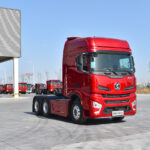Strange but true: vehicle interiors made of coffee
Strange but true: vehicle interiors made of coffee
Your next vehicle could contain an interior made out of coffee, eggs, walnuts, rice, and lentils!
These foodstuffs could just as likely be found in your future vehicle’s interior as your shopping basket, according to a new study by design and engineering consultancy CALLUM.
The design study – led by CALLUM’s head of materials and sustainability Charlotte Jones and co-founder Ian Callum – identified coffee pulp, eggshells, red lentils, walnuts, and rice as viable materials for vehicle interiors in 2030.
With thousands of tonnes of food wasted every day in the UK alone, CALLUM consulted with green-tech company Ottan to determine the most appropriate materials capable of replacing plastics while still meeting the rigorous design, environmental, and engineering requirements of a vehicle. Solutions identified that could meet the temperature and wear specifications included mixing eggshells with resin to create a smooth, opaque material with either a glossy or matt surface. Application examples include the trim surround for the window switches. By adding walnut shells to the eggshells, the recycled content of Ottan’s material increases from 78 to 84%.
Out-of-date rice or lentils can be turned into a smooth translucent material, ideal for illuminated areas of the vehicle such as lamp covers or illuminated switches. As a flame-resistant alternative, coffee pulp could replace traditional plastics for glossy, decorative trim such as dashboard inserts.
Keen to demonstrate that sustainable materials can still offer vivid colours, CALLUM identified purple carrot pulp that produces a mulberry-like colour for trim parts. Tree leaves can be recycled into a dark, smooth surface offering an alternative natural finish to wood veneers for the centre console or dashboard.
With seats requiring a blend of wear resistance, comfort, and colour fastness, CALLUM opted for preloved materials that would usually go to landfill. “Around the world, we consume roughly 62 million tonnes of textiles a year and around 87% of the total fibre input used for clothing is either landfilled or incinerated,” says Jones.
“Companies such as Planq take jeans, then shred and press them with potato or corn starch to create a hard veneer that could be used for seat shells or dash centres. The design study was created by CALLUM to illustrate that there is another way, and we can support manufacturers and suppliers to identify engineered alternatives that end consumers are increasingly looking for.”
The seat centre facings in the CALLUM design study use Camira, a fabric made from marine plastic waste such as polyester, whilst the bolster surfaces are covered in Féline, a soft material produced from PET bottles. Each offers no weight penalty, and crucially each can be recycled again if needed. For the carpet, Jones proposes Econyl, a material that uses nylon carpets or fishing nets to create a new hard-wearing fabric.
Whilst this is just a design study, CALLUM selected materials that have the potential to meet automotive requirements and be production feasible by the end of the decade.
Published by
Focus on Transport
focusmagsa












